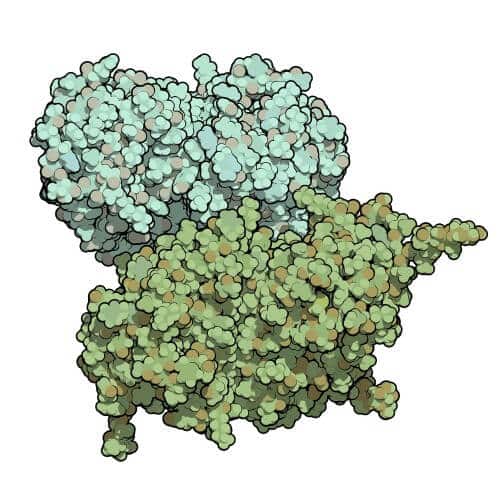Weizmann Institute of Science scientists have discovered: a protein involved in the brain damage caused by the fatal childhood disease

What causes the brain damage and inflammation that characterize the severe cases of Gaucher's disease? Doctors and scientists today know very little about the processes that cause brain pathology among Gaucher patients, and cannot offer any treatment for it - a complete lack of hope for the patients and their families. Recently, scientists from the Weizmann Institute of Science discovered a protein involved in the brain pathology of Gaucher's disease. The findings, published today in the scientific journal Nature Medicine, may offer new directions for medical treatment that will enable control of the disease, and possibly other similar diseases as well.
Gaucher's disease is a genetic disease that is common mainly among Ashkenazi Jews. Its cause is a genetic defect in a certain enzyme, whose function is to break down a fatty substance (lipid) called glucocerebroside. The lack of activity of the enzyme causes the accumulation of the fatty substance in various cells and tissues, preventing them from functioning properly. There are three types of the disease: the most common, type 1, is characterized, among other things, by the enlargement of the spleen and liver, leading to damage to the function of these organs, as well as health and bone problems. These symptoms also appear in those who suffer from types 2 and 3 of the disease, but these patients also suffer from nerve damage: in type 2, which is the most severe, extensive brain damage is caused leading to the death of the patient before the age of two, while in type 3 the brain damage develops at later ages and progresses more slowly.
But what exactly causes such extensive loss of nerve cells in types 2 and 3 Gaucher disease? Scientific studies done in recent years have revealed that the protein called RIP3 is involved in cell death processes and inflammatory processes. Dr. Einat Whitner and research student Ran Salomon, from the laboratory of Prof. Tony Futterman In the Department of Biological Chemistry at the Weizmann Institute of Science, they asked themselves whether it is possible that this is the missing link in the chain of molecular events leading to inflammation and death of nerve cells in Gaucher's disease. To test this, they created a model of Gaucher's disease in mice that produce the RIP3 protein, as well as in genetically engineered mice that do not produce the protein. The transgenic mice showed not only an improvement in motor coordination and brain damage, but also an improvement in the functions of the liver and spleen. The lifespan of the mice improved significantly, from 35 days to more than 170.

Dr. Whitner: "These are exciting results, which may point to the RIP3 protein as a target for medical intervention in Gaucher's disease, and thus offer a treatment that may significantly improve the quality and longevity of patients."
Although there is currently an effective treatment for Gaucher's disease, which is based on the injection of the proper enzyme responsible for breaking down the fatty substance, the annual cost of the treatment - which must be consumed throughout life - is approximately $200,000 per patient. In addition to this, the injected enzyme cannot cross the blood-brain barrier and penetrate into the brain, so the treatment is not effective in treating the neurological symptoms of type 2 and 3 Gaucher disease. In view of all this, there is an urgent need for more effective and cheaper treatments.
Prof. Futterman: "If we continue to get positive results, the new therapeutic target we discovered could be used to treat type 2 and 3 Gaucher disease or as an adjunct to the treatment of type 1 disease. In addition, it appears that the RIP3 protein plays a significant role in cellular processes involved in other diseases, and therefore our results There may be applications for other degenerative diseases of the nervous system - such as Krabbe's disease and other serious diseases that affect the brain."
